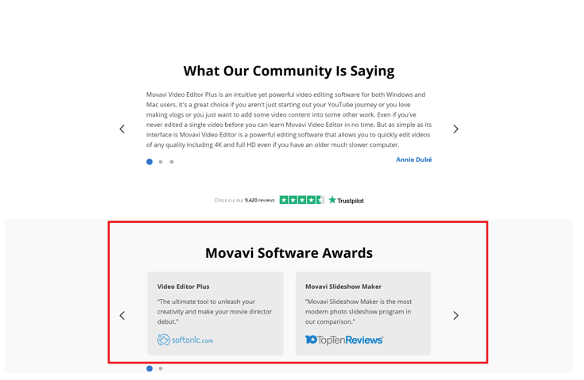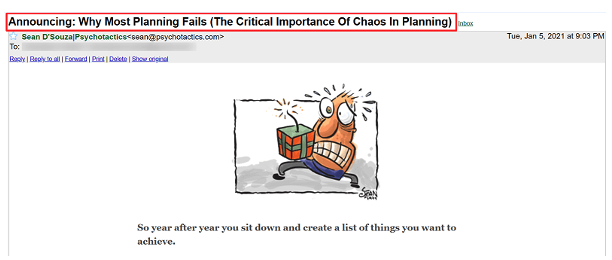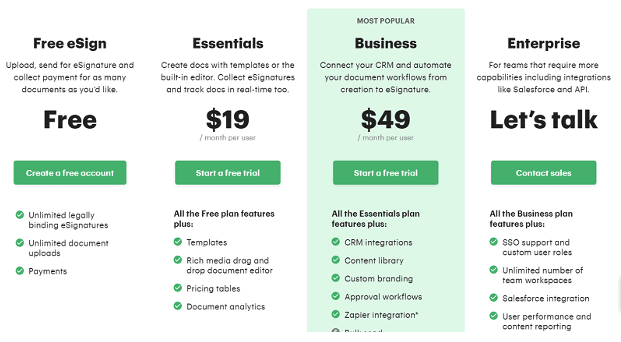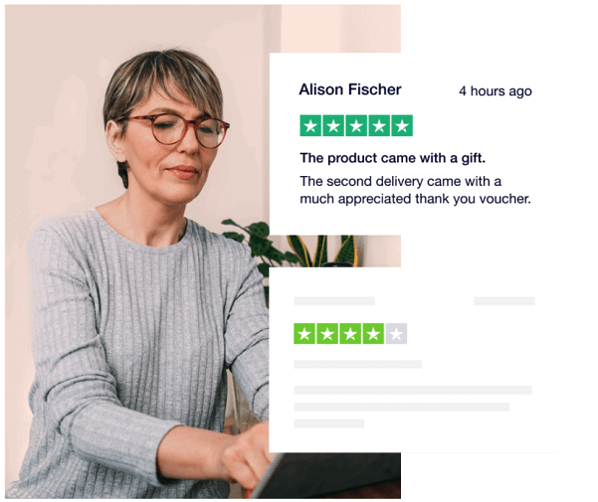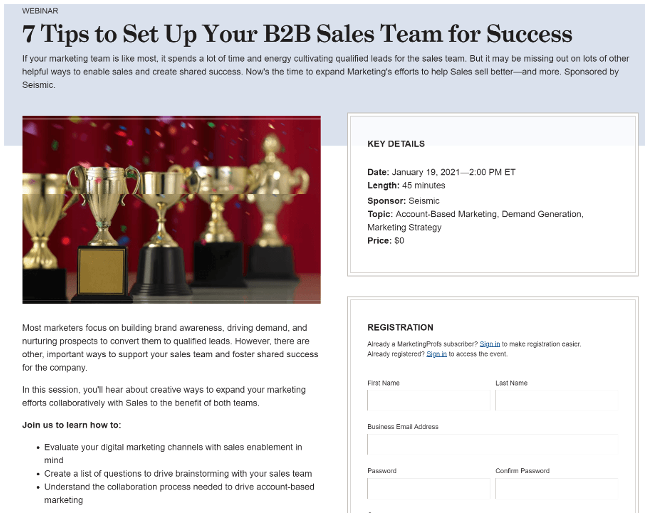Content marketing tactics and times change, but one thing remains constant – the underlying principles that drive people’s actions.
That’s why psychological triggers are invaluable in marketing. They get into the unchanging essence of unchanging human behavior. By anchoring your B2B strategy on human psychology, you will attract and convert more members of your audience.
Here are 10 principles that are especially useful in B2B lead generation.
Principle 1: Reciprocity
You’ve heard this: One good turn deserves another.
It stems from a deeply entrenched human inclination to respond to a positive action with another positive action. When someone does something nice for you, you want to return the favor.
Offer free stellar content. Generously give prospective customers free ungated content with no strings attached. Make sure the content is valuable and entertaining. The more you give, the more they will feel indebted to your brand. By the time you offer them gated content, they won’t hesitate to give you their details because you’ve front-loaded the relationship with generosity.
Give away product samples. Freebies aren’t equal. People deem some gifts more valuable than others. For example, a webinar is more precious than a blog post. An e-book seems more valuable than a checklist. Up the ante by giving product samples to prospects who match your buyer personas. Because product samples are higher up the value chain, prospects are more likely to repay you handsomely by buying the full product.
Free access to SaaS products. With SaaS products, give prospects free access to your product for a limited period. By the time the trial ends, they’ll appreciate the value of the product and be more likely to upgrade to a paid subscription because you triggered reciprocity by granting them free access.
Principle 2: Scarcity
Fear of missing out (or FOMO) is one of the oldest marketing psychology principles.
Nobody wants to miss out. It’s a bitter, sinking feeling people avoid at all costs. That’s one reason purchases skyrocket when their cart is about to close. Customers just can’t help themselves when a deal is about to disappear.
Here’s how to evoke the scarcity urge in your lead acquisition campaigns:
Run limited-time offers. Open-ended campaigns don’t compel prospects to act. But when people know the offer isn’t forever, they are more likely to act immediately.
Display a countdown timer. It’s one thing to be told the time an offer ends, but it’s another to see the clock ticking. It can create a physical reaction. Prospects act instinctively to grab the offer.
Say how many slots are left. To drive quick action, tell prospects how many spots are up for grabs. This idea works well for webinars and consulting calls.
A word of warning: Scarcity only works if you tell the truth. You can’t tell people an offer is closed only to reopen it the next hour.
Principle 3: Authority
Authority is the tendency for people to follow the recommendations of people more knowledgeable than they are. Try these ideas for how to exploit this bent positively.
Certifications. On your landing page, display any certifications your brand has earned. Elevating your company in the eyes of prospects makes them more likely to complete the requested conversion – download a report, book an appointment, etc.
Awards. Recognition from outside sources reinforces your authority in your niche and, therefore, earns your audience’s trust. Movavi’s home page shows one example of how to do this (see image at right).
Influencer endorsements. If you’ve worked with industry leaders, ask them to endorse your brand. Showcase their seal of approval on your site or other marketing materials.
Experience. Got vast experience in your field? Don’t let it go to waste. Infuse your veteran credentials into your content. Experience and longevity prove your authority in your space. Prospects are likely to take your word more seriously.
Principle 4: Novelty
We hate being stuck in the same ol’, same ol’. Something in our psyche salivates when something new hits the market. People want to dump the old and drape the new. Everybody loves to keep up with the latest trends in town.
Use this strong bias for something new in your lead-generation drives. Here’s how:
Improve your products. Don’t let product design stagnate. Improve your products. Once you do, make noise about it in your landing pages and email campaigns. Expressions like “new and improved,” “announcing,” or “give our new product a try” come in handy when crafting lead-gen copy. Psychotactics, a B2B consultancy, leads an email campaign promoting their free report by using “announcing” in the headline to point out that the report is new.
Invent trailblazer lead magnets. If you promote the same lead-gen resources your competitors use, prospects ignore you. To stand out, chart a new trail. Walk where nobody in your space has walked.
It’s not as difficult as you think. Experiment and develop a fresh way of doing a task your prospects struggle with. Or find a faster way to do something. Then package your solution as a lead magnet.
Refresh your lead-gen asset cover copy. Sometimes, all it takes to convince prospects to sign up is to refresh your cover copy. Marketers turn some slow-selling books into bestsellers by simply changing the title.
Tweak your titles and cover designs. The fresh look may be the boost your struggling campaign needs.
Principle 5: Paradox of choice
You might think more choice means more freedom and happiness. But human psychology doesn’t work that way. Having too many options is stressful. People get overwhelmed when the number of choices increases.
When faced with too many options, they freeze and end up doing nothing. To work with this truth, you could try to:
Reduce the choices. Cut down the options you present to the barest minimum. For instance, when you ask questions so you can segment your lists, don’t have too many group options. Your prospects likely won’t end up picking any of them.
PandaDoc whittled down to four offers to make the choice easier. This makes it easier to attract tons of leads through their freemium product (see image).
Bundle offers. If you have many offers, don’t present them as individual choices. Bundle together several options into a single offer.
Make one offer per campaign. When running a campaign, make only one offer. Multiple offers in one campaign split the focus of your audience. A split focus leaks conversions or, worse, leads to inaction.
Principle 6: Liking
The concept of liking in marketing revolves around people swayed by people they like or who have traits they admire. Here’s how to massage the liking principle into your lead generation campaigns.
Tap into influencer marketing. Partner with influencers who are admired or loved by your target audience. You don’t need to focus on pricey celebs who have millions of followers.
Partner with more affordable micro-influencers with smaller but highly engaged – and relevant – audiences. You can offer affiliate commissions as an incentive when negotiating rates.
Build a likable brand. Strive to cultivate likability. From your website colors to social media posts, from blog articles to emails, from the handling of negative reviews, appear friendly.
Dollar Shave Club has built an irresistible brand. Whether it’s a social media post or an email, their laid-back humorous style shines through:
Emphasize similarities. People like people who have similar attributes. Highlight the things in your content with what your brand has in common with your prospects – interests, opinions, etc. They are more likely to feel a fondness for your brand.
Principle 7: Loss aversion
People have a natural bent to avoid loss rather than attain gain. Psychologists say the sting of loss is two times more powerful than the elation of gain. To profit from this predisposition put prospects in a position where they could lose.
Gamification fits the bill perfectly. Here are three ways to do it:
Create engaging quizzes. A high-quality quiz dares participants to up their game to avoid defeat at all costs by providing relevant info about themselves. Also, people enjoy the self-discovery nature of quizzes. Finally, quizzes provide highly personalized experiences that appeal to audiences.
Reward task completion. Let’s say you are running a webinar. Promise a special gift to those who stay until the end. Because they don’t want to lose the offer, many will stick around, boosting attendance and engagement stats.
Make the rewards generous. To motivate participants, offer them lavish rewards. You can award points, virtual trophies, and badges. The higher the rewards, the greater the loss if they don’t take part.
Gamification makes lead generation fun. By so doing, you also increase lead acquisition as more potential customers consume your content. SkilledUp hiked its email subscriber rate by a staggering 2,400% by gamifying their content.
Principle 8: Herd mentality
People have a propensity to conform. Humans are social beings that follow the lead of fellow humans. Here are some ways to tap into that impulse:
Show the number of downloads. Show visitors the popularity of your content, including the downloads-to-date number. (If your downloads are low, don’t reveal the number; otherwise, you will trigger a negative herd mentality.)
Show visitor activity. Similar to download popularity, show your site traffic numbers if it’s busy.
Display testimonials. To supercharge the power of your testimonials, display them in the content surrounding your lead-gen asset. When potential customers see the swarms of people who endorse your lead-gen asset, they are more likely to join the bandwagon.
Principle 9: Confirmation bias
One more B2B lead-generation principle that drives conversions is confirmation bias – the tendency to lean toward information that supports or confirms your beliefs while rejecting information that contradicts them. Here’s how to work with confirmation bias:
State your company values. Don’t keep your company values private. Weave them into your logo, core messaging, and slogans so people know what you hold dear.
Create belief-based content. Some content types are values-driven by nature. A manifesto declares in no uncertain terms what your brand believes in. Such content nets many admirers and leads as people learn those values.
Comment on trending social issues. Be smart when social issues erupt. Use the moment to take a stand on the trending subject. Prospects who support your view on the topic will develop a strong affinity for your brand.
Naturally, you’ll turn off those with an opposing view, but that’s OK as long as your position on the matter anchors on your values.
IBM knows how to affirm its followers’ values as this Instagram post shows:
Principle 10: Information gap theory
The human brain loves wholeness. Whenever something disrupts this innate desire for completion, our brains go into a tailspin. We get a strong, irresistible pull to find the missing piece. This compulsion is called the information gap theory.
Try these tips to draw prospects into your funnel:
Craft curiosity-evoking headlines. Create headlines that spark curiosity so prospects can’t help but click your call to action to find out more. Here are a few standard phrases to help:
- The Secrets Of/To [Desired Outcome]
- Little Known Ways To [Desired Outcome]
- What Everybody Ought To Know About [Topic]
- Surprise Gift Inside
Use lead-generation quizzes. A quiz evokes curiosity. As your audience goes through the series of questions, their enthusiasm builds until they get to the results.
Make them wait for the big reveal. People want to know all the details right away. By creating a series of steps to the big reveal, people are more likely to follow along to get to the payoff.
MarketingProfs used this principle for a webinar invitation. While the headline touts “seven tips,” the landing page doesn’t reveal all of them. Drip content also suits this approach. By the time the next content installment arrives, your audience will be eager to gobble it up.
Psych up your audiences
Bryan Kramer’s book title is right: There Is No B2B or B2C: It’s Human to Human #H2H. Your content is a conversation between two humans. Don’t fight human psychology in your marketing efforts. Work with it. You’ll reap the handsome rewards.


